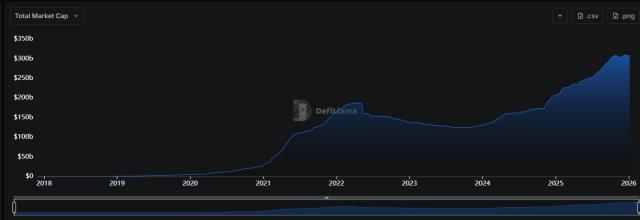By Andrea Chang, Partner at Oak Grove Ventures

Introduction
Oak Grove Ventures is a fund company focusing on cutting-edge technologies, Web3 and encrypted payments. Led by its investment partner Andrea Chang, the company published a stablecoin research report titled "Innovation, Trends and Growth Potential" and The article discusses the stablecoin landscape, major industry components, current trends, and various evaluation indicators for stablecoin companies. With its deep background in crypto payments, Oak Grove Ventures is committed to providing more use cases for stablecoin companies. , achieving large-scale application in the industry. This report is the first in a series of reports on payments. Oak Grove Ventures is an innovative investment fund dedicated to supporting next-generation technologies in the rapidly developing digital asset and blockchain technologies. Progress and financial innovation.
Table of contents
Introduction 1
Current Stablecoin Landscape 1-2
Current and future growth drivers of the stablecoin market 2-3
Recent Technological Developments Enhancing Stablecoins 4
Outlook: Impact on Crypto-native CeFi 4-7
Introduction
Mass adoption of cryptocurrencies has long been the holy grail of the cryptocurrency industry, with payment systems serving as the bridge between this technology and the “real” world. Traditional financial systems have long been plagued by high fees, slow transaction speeds, and Troubled by issues such as geographical restrictions.
Cryptocurrency payments can not only solve these problems, but also have the advantages of lower fees, faster processing time, borderless transactions, and more efficient and inclusive financial interactions. As the first report in this series on cryptocurrency payments, this study aims to Analyze the stablecoin market landscape and drivers of future growth.
Stablecoins play a pivotal role in the cryptocurrency payment ecosystem, serving as a bridge between innovation and usability. Stablecoins minimize the price volatility of various underlying assets such as fiat currencies, providing a platform for users and Enterprises provide a reliable medium of exchange. In addition, stablecoins are an integral part of all crypto-native applications, such as centralized exchanges, decentralized finance (DeFi) platforms, wallets, etc. The DeFi platform provides opportunities for lending, borrowing and earning money with a stable value. In the B2B industry, we also see traditional fintech companies exploring stablecoin solutions to improve actual business efficiency. Although there are still regulatory differences in many regions, Although there is still uncertainty, more institutional capital is actively joining the industry. In short, stablecoins are crucial in promoting cryptocurrencies to become mainstream payment solutions and meet the needs of the current financial system and consumers.
The current landscape of stablecoins
Stablecoins can be roughly divided into three categories - fiat - collateralized , crypto-collateralized, and algorithmic-collateralized. Recently, many new projects have begun to adopt a hybrid model that mixes multiple assets or chooses real assets (RWA) as collateral.
Overview of the Stablecoin Ecosystem

Source: Berkeley DeFi MOOC
Stablecoins are more active than ever before;
Still has a dominant position in the market.
Data provided by Glassnode shows that as of mid-June 2024, the total market value of the stablecoin market (including multiple cross-chains including Ethereum) has grown to more than $150 billion. Among them, USDT accounts for about 74%, USDC Bitcoin accounts for about 21%, and the rest are various other stablecoins.
Stablecoins: Total Supply

Source: Glassnode
Volume figures vary; USDC and DAI see strong growth
However, it is worth noting that when it comes to trading volume, we find that different data sources will have different calculation methods, which may or may not take into account zombie trading, outlier trading, and maximum extractable For example, a report released by Visa in April this year showed that according to their calculation method, USDC coin trading volume has exceeded 100%, although there is still a considerable gap in market value (21% vs. 74%). If we only consider Ethereum, although DAI has a lower market capitalization than USDC and USDT, the report shows that DAI has the largest trading volume among the three, mainly due to the flash loan mechanism. The highest among them.
Stablecoins: Trading Volume
Source: Glassnode
Currently, the transaction volume of stablecoins has exceeded that of Master Card, and may exceed that of Visa Card next.
From a broader perspective, stablecoins have been widely accepted, with their combined transaction volume exceeding that of Bitcoin and even about to surpass that of the second largest bank card network, Master Card. Although Visa Card Company claimed in a recent report, Over 90% of trading comes from bots, but we recognize that the growing usage and liquidity of stablecoins still has an impact.
Annual transaction volume of Bitcoin/stablecoins and other financial systems

Source: Understanding Stablecoins (Visa)
Current and future growth drivers of the stablecoin market
As USDT and USDC still dominate the stablecoin market, we have broken down the latest announcements from these two companies to analyze the current main growth drivers of the stablecoin market. In the future, we expect the current main growth to continue The initial entry into the DeFi market and innovation in DeFi will further drive the growth of the stablecoin market.
Stablecoins outside the Ethereum ecosystem are on the rise
Since the first half of 2024, the USDC transfer value on Solana has exceeded the USDC transfer value on Ethereum. However, it is worth noting that since most stablecoin transactions come from MEV arbitration, this transaction volume may This is mainly attributed to high-frequency trading rather than new user growth. This also means that stablecoins have greater liquidity, which is beneficial to DeFi trading activities, which is worth considering.
We expect this trend to continue with the launch of Circle’s Cross-Chain Transfer Protocol (CCTP), which enables secure transfers between different blockchain ecosystems using native minting and redemption methods of USDC. Since March this year, Solana developers can now exchange USDC coins from Ethereum native to other EVM-compatible ecosystems, including Arbitrum, Avalanche, Base, Optimism, and Polygon. Some DeFi projects based on Solana have integrated cross-chain in the early stage. Chain Transfer Protocol (CCTP). Non-EVM blockchains will also be supported in the future. USDC coin has also expanded its issuance on ZKsync, Celo and TON.

Source: Artemis
Demand for stablecoins is strong in emerging markets
Emerging markets have been critical to the growth of USDT and USDC, the world’s top two stablecoin issuers, highlighting the potential of stablecoins for economic stability, financial inclusion, and cross-border transactions in an era of rising inflation. Function.
As local currencies depreciate, USDT has gained widespread adoption in emerging markets as an alternative to the U.S. dollar and has become the most trusted digital dollar in many emerging markets. For example, in Brazil, USDT accounts for 50% of all cryptocurrency transactions in the country. The same is true for many other countries. This shift highlights the strategic importance of USDT in ensuring financial stability and accessibility in economies facing currency instability. In June 2024, Tether announced that it would provide a XREX invested 18.75 million US dollars, and XREX mainly engages in cross-border payments for small and medium-sized enterprises in emerging markets and B2B cross-border stablecoin payments.
Innovation and growth in the DeFi market
The innovation of new applications provides more use cases for financial activities involving stablecoins. The development of liquid spotting platforms such as Lido Finance and perpetual exchanges such as Synthetix Perps (a newly launched platform by Synthetix) has provided a lot of opportunities for stablecoin holders. In March of this year, Sparklend, a lending platform that is a child DAO of MakerDAO, issued so much DAI in recent weeks that it needed to authorize more loans.
Ethena, the fastest growing stablecoin in 2024, has partnered with centralized exchanges and DeFi platforms such as Lido Finance, Curve, MakerDAO, and Injective Protocol to form an ecosystem with huge revenue opportunities and user experience.
Major institutions are ready to participate in the Defi market
It is expected that the Federal Reserve will cut interest rates in the next two years, which gives financial institutions more motivation to seek higher returns from the DeFi market.
While DeFi startups are still in the seed stage, we have seen an increase in investment activities in DeFi startups from BlackRock, Fidelity, and Franklin Templeton in the primary market, which is not common compared to the previous cycle. These DeFi startups that have received investment have recently focused on liquidity staking and risk-weighted assets.
These institutional giants have also begun to explore on-chain activities. Franklin Templeton, a $14 billion fund company, launched a tokenized mutual fund on Polygon, competing with BlackRock, which previously launched a similar fund on Ethereum.
Fintech companies are issuing their own stablecoins
Fintech companies, especially those with large payment networks, have an incentive to launch their own stablecoins in order to add value. PayPal launched the PayPal USD stablecoin in August last year and began to support its Venmo payments a few weeks later. In April, Ripple revealed plans to launch a stablecoin pegged to the U.S. dollar, 100% backed by U.S. dollar deposits, short-term U.S. government bonds and other cash equivalents. Stablecoins, Nomura Holdings has also launched a Japanese yen stablecoin, and Colombia's largest bank, Banco de Colombia, has also launched its own stablecoin COPW, which is backed 1:1 by the Colombian peso. In Europe, France's third largest bank, Societe Generale, It first launched its own euro stablecoin in December last year.
Synthetic collateral ( including RWA-backed stablecoins ) continues to grow
Stablecoin projects are increasingly different from the traditional collateralized debt position (CDP) model that emerged in the last market cycle. For example, Tether’s aUSDT is a tokenized coin that is backed by XAUT (Tether Gold) on the company’s new open platform Alloy on Ethereum. RWA is an over-collateralized synthetic dollar on Ethereum, allowing users to mint collateralized synthetic assets. See the appendix below for other newer projects that use RWA as collateral.
Another example is Ethena Labs ’ USDe. This is the superstar of 2024 and has attracted over $3 billion in total value locked (TVL) to date. USDe generates USD value and yield through two main strategies: Leveraging stETH and its Intrinsic yield; short ETH position, balance delta and take advantage of perpetual/futures funding rates. This strategy allows for the creation of a incremental neutrality through collaboration with centralized exchanges (CEX) such as Bitcoin and Binance. The collateralized debt position (CDP) of Ethena combines the spot deposit of locked ether (stETH) with the corresponding short position. Holding Ethena's sUSDe (locked USDe coins) essentially becomes a basic transaction, balancing the locked USDe in the market. Ethereum (stETH) spot position and Ethereum (ETH) short position. This setup provides users with the yield difference between these positions, which currently yields about 27%.
Stable assets with built-in yields: Internet bonds

Source: EthenaLabs Gitbook
The latest technological developments that enhance stablecoins
Bitcoin Ecosystem
Bitcoin scaling has spawned multiple Bitcoin second-layer chains as well as first-layer innovations (e.g., Runes). The development of Bitcoin DeFi has also created more use cases for these native Bitcoin stablecoins.
For example, Bitcoin second-layer projects such as RSK (Rootstock) enable Bitcoin smart contracts. By enabling smart contracts, RSK opens the door to building stablecoins backed by Bitcoin. These stablecoins are pegged to the value of fiat currencies, but Backed by Bitcoin while still leveraging the security and trust of the Bitcoin network to provide price stability to users. A notable project based on RSK is Sovryn . It leverages this advanced capability of Bitcoin to provide users with value comparable to fiat currencies. A stablecoin that is pegged to and protected by the underlying Bitcoin network.
Stacks is a second-layer project (L2) that integrates smart contracts, decentralized applications (dApps), and Bitcoin. It builds stablecoins through its ecosystem, featuring the stablecoin USDA developed by Arkadiko Finance. USDA is a decentralized, crypto-collateralized stablecoin that maintains stability by collateralizing STX tokens (Stacks’ native token). Users can mint USDA by locking STX in the Arkadiko Finance protocol. The protocol uses “ The “Proof of Transfer” consensus mechanism uses Bitcoin to support stablecoins, thereby ensuring the value of stablecoins. The stability of USDA
It is backed by over-collateralization, ensuring that its value is linked to physical assets.
Cross-chain
Interoperability is critical to the accessibility and adaptability of stablecoins. Recent advances in cross-chain solutions have significantly improved the ability of stablecoins to operate seamlessly across different blockchain networks. This advancement allows users to Stablecoins can be effortlessly transferred between different platforms, ensuring wider acceptance and usage of stablecoins in the decentralized financial ecosystem.
- "Ondo Finance has partnered with Axelar to launch a cross-chain solution called Ondo bridge, which supports the issuance of native tokens including USDY in blockchain networks supported by Axelar."
- USDC’s cross-chain protocol was developed in collaboration with Chainlink’s Cross-Chain Interoperability Protocol (CCIP), which significantly improves its utility and coverage across various blockchain networks.
- LayerZero’s OFT standard — and the recently launched stablecoin USDV — are examples of a new generation of stablecoins that promote interoperability across multiple blockchain community ecosystems, overcoming the dangerous prospect of a single chain dominating the market.
Outlook: Impact on native cryptocurrencies CeFi
We note that stablecoins are a key strategy for Web2 and Web3 fintech companies, especially for crypto-native centralized finance (CeFi) platforms. We define crypto-native centralized finance (CeFi) platforms as those that operate in the cryptocurrency space. Centralized entities that provide payment, trading, lending and other services in the field. By integrating stablecoins or cooperating with relevant providers, these platforms can provide more stablecoin options to existing customers and attract new customers.
Alchemy Pay is a leading payment solutions provider that has become an important bridge between the traditional fiat currency system and the growing cryptocurrency industry. Its platform enables merchants and consumers to easily transact using both cryptocurrencies and fiat currencies.
Alchemy Pay expands support for Celo-native USDC and USDT, facilitating easy conversions, demonstrating the company’s commitment to providing a variety of stable and reliable payment options. In June this year, Alchemy Pay also announced support for USDT on TON, expanding TON’s user base. The access scope.
Payment Channels

Source: Alchemy Pay
Crypto.com was founded in 2016 and has grown into one of the world's largest cryptocurrency platforms. The platform also issues the Crypto.com Visa Card, which allows customers to make daily purchases directly from their crypto accounts. Visa began testing how to use financial The company has partnered with Crypto.com on a pilot project and is currently using USDC to fulfill its settlement obligations on Australian Visa Cards. Visa’s use of USDC settlements means Crypto.com no longer needs to use Digital currency is converted into fiat currency. USDC settlement improves capital management, which in turn helps Crypto.com achieve a range of additional business benefits.
By leveraging Visa’s USDC settlement capabilities, Crypto.com can:
Reduced prepayment of funds from 8 days to 4 days 20-30 basis points reduction in foreign exchange fees Focus on company strategy, not day-to-day operations |
Source: Visa
USDC Settlement
Issuers (Crypto-native companies/Exchanges and Fintechs) Helps drive more payment options and transaction volumes Support USDC currency exchange to help better manage settlement capital resources Acquirer Help expand product and acceptance, attracting crypto-enthusiastic merchants and customers Ability to receive payments using USDC and conduct transactions on the blockchain |
Source: Visa
[Appendix 1] Well-known market projects and case studies
Collateralized Debt Position (CDP)
MakerDAO vs. Liquity vs. Curve
Recently, several major stablecoin projects, including MakerDAO, Liquity, Curve, AMPL, and Frax, have made significant progress in enhancing their protocols and expanding their ecosystems. The projects have established strategic partnerships and integrated with other blockchain networks, improving stability and utility and attracting a wider user base. The major developments and milestones achieved by these projects in the past year are as follows:
MakerDAO
1) GUSD PSM Adjustment: In June 2023, MakerDAO voted to adjust the parameters of the GUSD Peg stabilization module, including lowering the maximum debt ceiling and reducing the transaction fee rate to 0%.
2) Launch of Spark Protocol: MakerDAO launched the Spark protocol in September 2023. The protocol aims to enhance the DeFi functionality of the ecosystem by integrating multiple stablecoins and providing yield optimization.
3) New Collateral Types: In early 2024, MakerDAO introduced several new collateral types to the platform, including tokenized real estate and other physical assets, to diversify and stabilize DAI support.
Liquity
1) Integration with Aave: In August 2023, Liquity announced its integration with Aave, allowing users to use LUSD as collateral in the Aave ecosystem, thereby increasing its practicality and adoption.
2) LUSD on Optimism: In December 2023, Liquity deployed LUSD on the Optimism second-layer network, increasing transaction speed and reducing user costs.
3) Protocol Upgrade: In May 2024, Liquity made a major upgrade to the protocol to improve stability and security, including improvements to the liquidation mechanism and stabilization pool.
Curve
1) Launch of crvUSD: In October 2023, Curve Finance launched its own stablecoin crvUSD, with the aim of deeply integrating Curve’s liquidity pool and governance mechanism.
2) Cooperation with Yearn Finance: In January 2024, Curve cooperated with Yearn Finance to optimize the yield farming strategy and combine Curve’s liquidity pool with Yearn’s insurance vault.
3) Cross-chain expansion: By June 2024, Curve will expand its operations to multiple blockchains in the network, including Avalanche and Solana, to increase liquidity and user base.
AMPL(Ampleforth):
1) Launch of Geyser V2: In July 2023, Ampleforth launched Geyser V2, an upgraded liquidity mining program that provides more flexible and generous rewards for providing liquidity to decentralized exchanges.
2) AMPL on Ethereum’s second layer: In November 2023, Ampleforth expanded its business to Ethereum’s second layer solution, improving scalability and reducing transaction fees for AMPL users.
3) Cooperation with Chainlink: In February 2024, Ampleforth announced a partnership with Chainlink to use its Oracle service to provide more accurate and decentralized data to improve AMPL's adaptive supply mechanism.
Frax
1) Launch of Fraxlend: In September 2023, Frax Finance launched Fraxlend, a decentralized lending protocol that allows users to borrow and lend stablecoins at dynamic interest rates.
2) New collateral types: In December 2023, Frax added a variety of new collateral types, including tokenized gold and synthetic assets, to support the issuance of FRAX.
3) Governance token upgrade: In April 2024, Frax upgraded its governance token FXS and added some new features such as spotting rewards and improved voting mechanisms.
[Appendix 2] Evaluation indicators of stablecoins
Startups and Due Diligence Checklist
Investors are advised to evaluate emerging stablecoin issuing companies from two dimensions: mechanism design and cooperative resources.
Mechanism design: focus on collateral-to-debt ratio, liquidation method, cross-chain support, etc.
Collateral design: collateral composition, collateral type, collateral health, transparency and stability
Partners: Access to major DeFi partners, first batch of users, and expectations for liquidity
Market Cap
A high ratio reflects the size and market adoption of the stablecoin. Generally speaking, a higher market capitalization indicates greater trust and usage.
Liquidity
High liquidity ensures minimal slippage during trading, which is crucial to maintaining the peg.
mortgage
A high collateral ratio determines the security and stability of stablecoins.
Redemption Mechanism
A good redemption mechanism ensures redemption back to the underlying assets and maintains trust in the value of the stablecoin.
Metrics include associated fees and historical redemption success rates.
Adoption rate
Gaining widespread adoption demonstrates trust and utility within the ecosystem.
transparency
Transparency builds trust among users and regulators.
Security
Good security ensures the safety of user funds and the integrity of stablecoins.
Community Support
A strong community drives adoption and innovation.
[Appendix 3] Stablecoin startups that have recently completed funding
1) Agora: https://www.agora.finance/
Agora Finance provides a yield-bearing stablecoin backed by VanEc, emphasizes regulatory compliance and actively obtains necessary licenses. Currently, its services are limited to certain markets outside the United States.
Agora holds its reserve fund in trust and entrusts it to one of the world's largest custodians, which is regularly audited to ensure a high level of security. Assets are protected from bankruptcy, which enhances investor confidence.
Dragonfly Capital led the investment in Agora, demonstrating strong support and confidence in its potential. Recent news shows that Agora is expanding its partnerships with financial institutions to enhance liquidity and accessibility, further consolidating its market position.
2) Midas: https://midas.app/
Midas has launched a stablecoin backed by U.S. Treasuries, and plans to launch its stUSD token on DeFi platforms such as MakerDAO, Uniswap, and Aave as soon as possible. Midas used BlackRock to purchase Treasuries and Circle’s USDC coin. It is to provide a safe and stable digital asset.
MIdas’ main partners include custody technology provider Fireblocks and blockchain analytics provider Coinfirm. Its recent business introduction shows that Midas is focusing on integrating advanced security measures and extending its business to more DeFi platforms to Maximize the utility and adoption of StUSD coins.
3) Angle : angle.m o ney.
The USDA stablecoin launched by Angle is backed by U.S. Treasury bonds and tokenized Treasury bills. Angle protocol USDA token holders can receive rewards with a target yield of at least 5% from the token's reserve assets and lending platform income.
Angle is also working on creating a foreign exchange trading center supported by A16z to enable seamless conversion between stablecoins pegged to the US dollar and the euro. Its recent progress includes increasing the fixed investment rewards, expanding the foreign exchange trading center to include more currency pairs, and Build strategic partnerships to increase protocol security and user engagement.
4 ) Yala : https://yala.org/
Yala is revolutionizing Bitcoin liquidity with its innovative meta-yield stablecoin, YU. YU is a BTC-backed stablecoin that leverages the power of Bitcoin in decentralized finance (DeFi) to enable liquidity across multiple Blockchain transactions generate revenue.
Using the Ordinals protocol, Yala issues YU directly on Bitcoin and integrates it with a decentralized index network and oracles through a meta-protocol. This setup ensures borderless and accessible Bitcoin liquidity. Allowing users to generate income from various blockchain ecosystems without leaving the Bitcoin environment.
Yala uses the Ordinals protocol to issue YU directly on Bitcoin and integrates it with the decentralized index network and Oracle through the meta-protocol. This setup ensures the borderlessness and accessibility of Bitcoin liquidity. Users can generate income from various blockchain ecosystems without leaving the Bitcoin environment.
Yala’s latest developments include the implementation of a mapping and minting mechanism, which enhances the ability of users to seamlessly utilize cross-chain benefits. This approach not only enhances the utility of Bitcoin in DeFi, but also makes Yala a pioneering force in the field of decentralized finance. .
5 ) BitSmiley: https://www.bitsmiley.i o/
BitSmiley is building a comprehensive financial ecosystem on Bitcoin through its Fintegra framework, which includes a decentralized over-collateralized stablecoin protocol, a trustless native lending protocol, and an on-chain derivatives protocol. The first step is to launch an on-chain stablecoin generated by over-collateralization of Bitcoin, namely, bitUSD.
bitUSD will serve as the cornerstone of the BitSmiley ecosystem, launching first on the first BTC second-layer platform in partnership with BitSmiley and eventually expanding to other second-layer solutions. bitUSD’s overcollateralization mechanism is similar to MakerDAO’s model, which eliminates The unfamiliarity of DeFi users. Recently, BitSmiley received investments from OKX Ventures and ABCDE, highlighting the project’s credibility and potential in the field of decentralized finance.
6) BitStable: https://bitstable.finance/
BitStable is a decentralized asset protocol based on the BTC network. The platform allows anyone, anywhere to generate $DALL stablecoins from collateral assets within the BTC ecosystem. BitStable uses a dual token system ($DAII and $BSSB) and Cross-chain compatible structure. $DAII is a stablecoin (BRC 20) whose value and stability come from the robustness of assets in the BTC ecosystem, including BRC 20, RSK, and Lightning Network.
In BitStable's vision, $DAII's cross-chain capabilities can connect the Ethereum community with the BTC ecosystem. The total supply of $DAII is capped at 1 billion tokens. $BSSB serves as the platform's governance token, enabling the community to maintain the system. and manage $DAII. In addition, BitStable incentivizes $BSSB holders through dividends and other measures.








